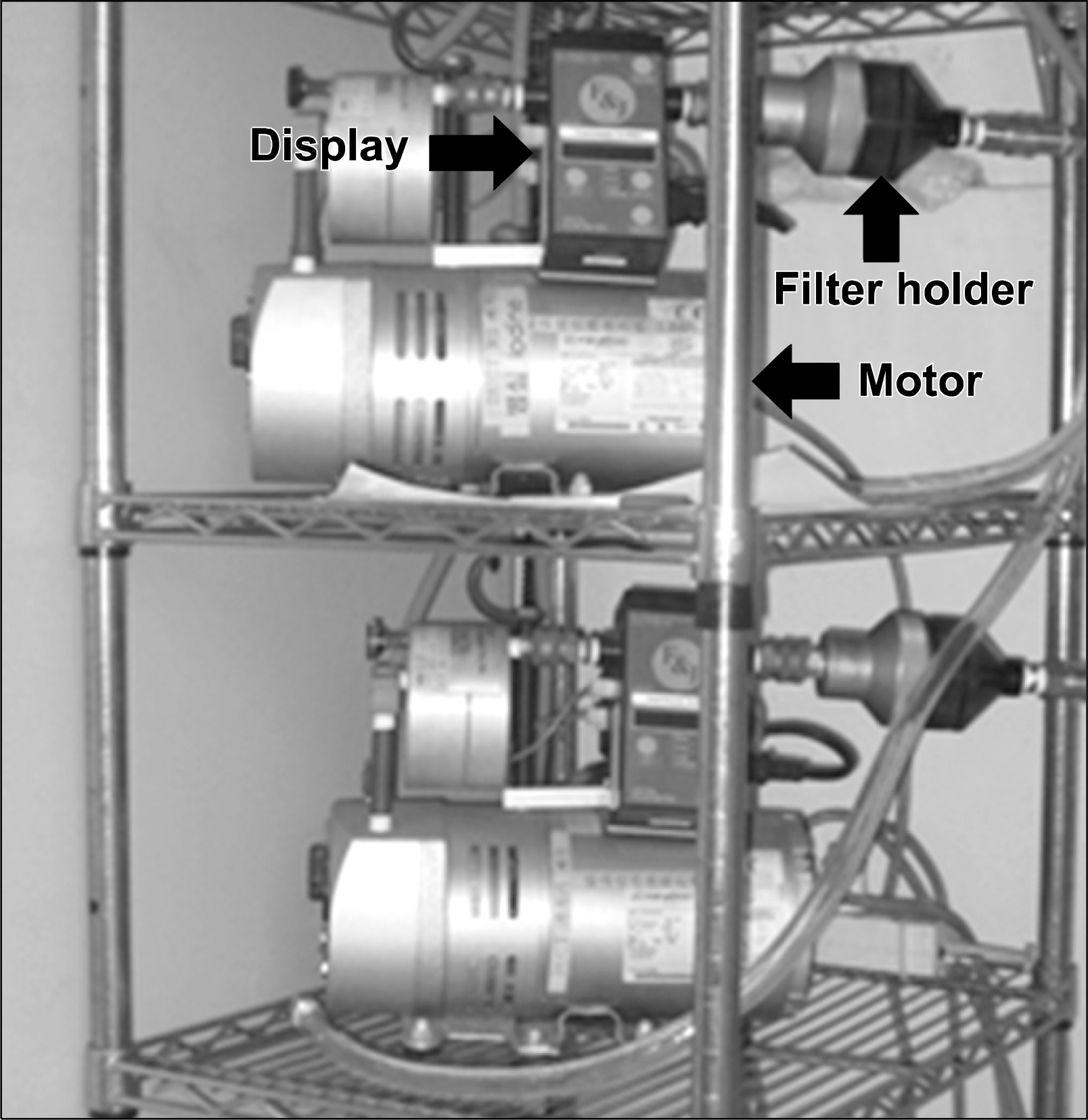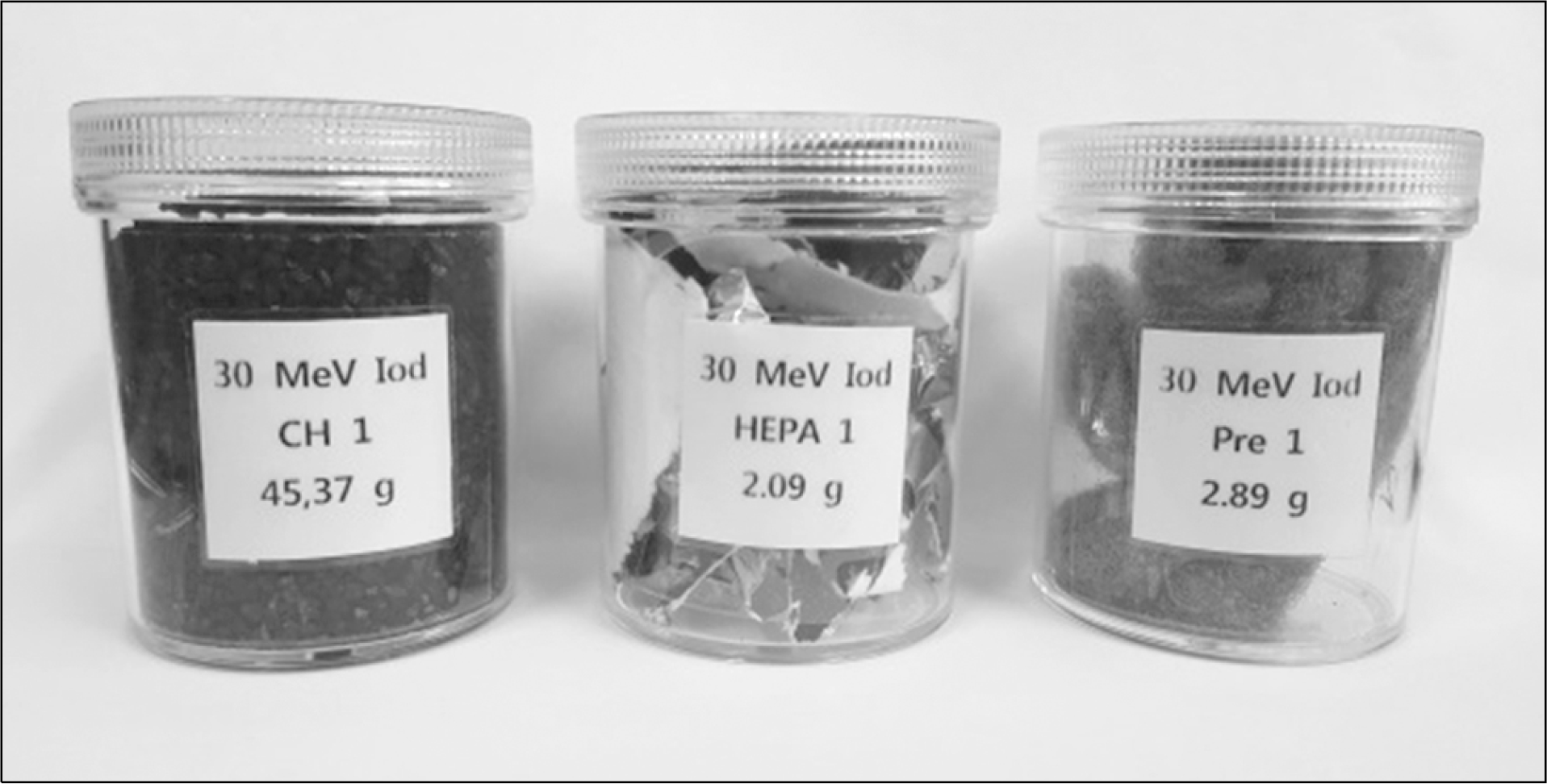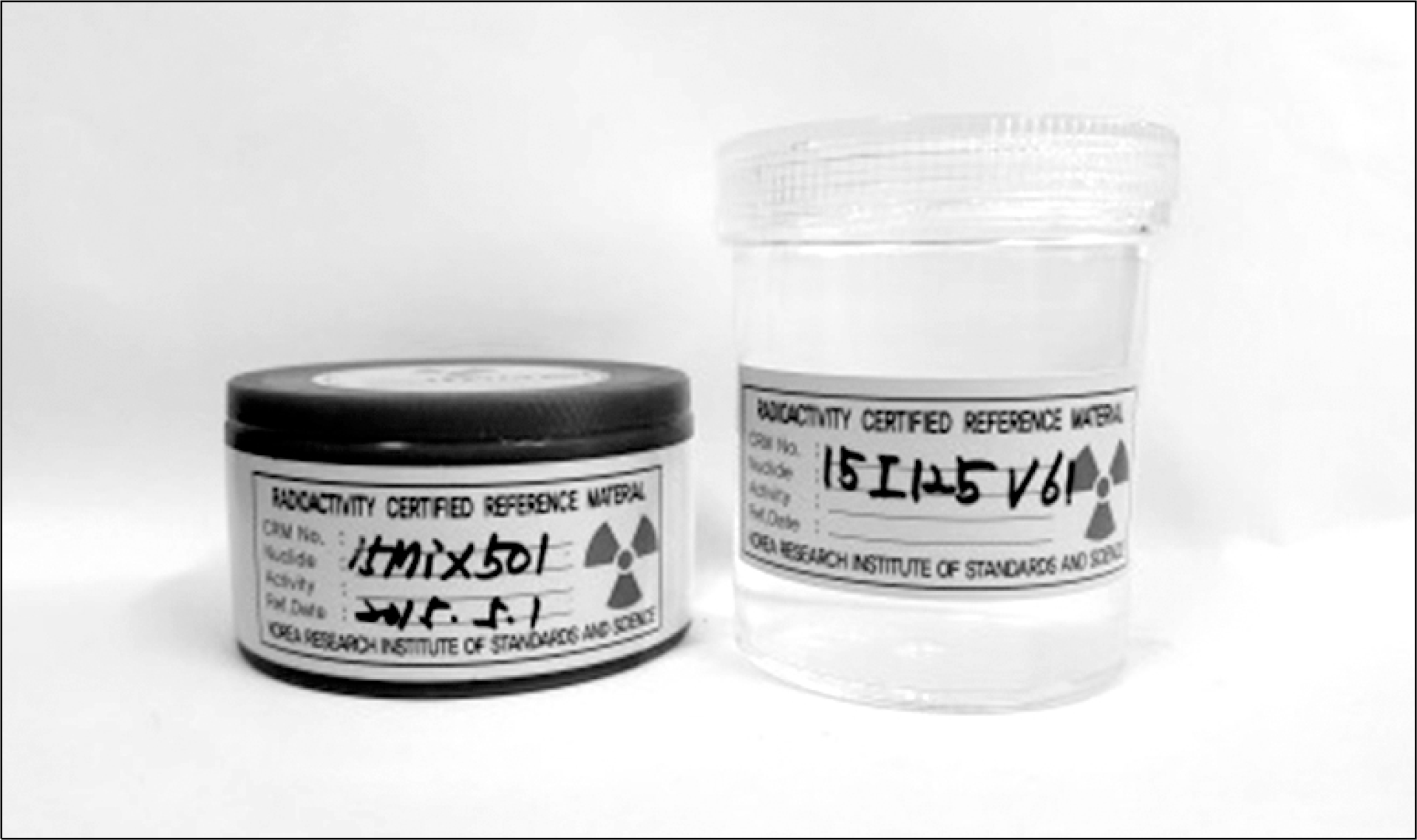Abstract
When air discharged from a radioisotope production facility is contaminated with radiation, the public may be exposed to radiation. The objective of this study is to manage such radiation exposure. We measured the airborne radioactivity concentration at a 30 MeV cyclotron radioisotope production facility to assess whether the exhaust gas was contaminated. Additionally, we investigted the radioactive contamination of the air filter for efficient air purification and radiation safety control. To measure the airborne radiation concentration, specimens were collected weekly for 4 h after the beginning of the radioisotope production. Regarding the air purifier, five specimens were collected at different positions of each filter—pre-filter, high-efficiency particulate air filter, and charcoal filter—installed in the cyclotron production room. The concentrations of F-18, I-123, I-131, and Tl-201 generated in the radioiodine production room were 13.5 Bq/m3, 27.0 Bq/m3, 0.10 Bq/m3, and 11.5 Bq/m3, respectively; the concentrations of F-18, I-123, and I-131 produced in the radioisotope production room were 0.05 Bq/m3, 16.1 Bq/m3, and 0.45 Bq/m3, correspondingly; and those of F-18, I-123, I-131, and Tl-201 generated in the accelerator room were 2.07 Bq/m3, 53.0 Bq/m3, 0.37 Bq/m3, and 0.15 Bq/m3, respectively. The maximum radiation concentration of I-123 generated in the radioiodine production room was 1,820 Bq/g, which can be disposed after 2 days. The maximum radiation concentration of Tl-202 generated in the radioisotope production room was 205 Bq/g, and this isotope must be stored for 53 days. The I-123 generated in the radioiodine production room had a maximum concentration of 1,530 Bq/g and must be stored for 2 days. The maximum radiation concentration of Na-22 generated in the radioisotope production room was 0.18 Bq/g and this isotope must be disposed after 827 days. To manage the exhaust, the efficiency of air purification must be enhanced by selecting an air purifier with a long life and determining the appropriate replacement time by examining the differential pressure through systematic measurements of the airborne radiation contamination level.
Go to : 
REFERENCES
1.KARA Report: Survey on the Status of Radiation/RI Utilization in 2013. Korean Association for Radiation Application, Seoul, Korea. 2014.
2.Han SE. Current situation and prospect of radiation safety regulations in field of medicine, Radiat Radioisotope J. 31(2):21–25. 2016.
3.Jeong CH., Song YJ. An investigation of awareness on the Fukushima nuclear accident and radioactive contamination, J Radiat Prot Res. 41(1):7–14. 2016.
4.Yoon SY., Yeo HY. Measurement and evaluation of radiation exposure doses for radiation workers in veterinary hospitals, Nambu University, Seoul, Korea. 2015.
5.Lee SY., Lim HS., Han MS. The evaluation of patients' radiation dose during TACE of interventional radiology, J Radiol Sci Technol. 34(3):209–214. 2011.
6.Yang NH. Five-Year Individual Exposure Doses of Korean Radiation Workers according to ICRP 103, Dongshin University, Seoul, Korea. 2014.
7.Kim CB. Measurement and estimation for the clearance of radioactive waste contaminated with radioisotopes for medical application, Dongshin University. 2014.
8.Enforcement Ordinance of Nuclear Safety Act No.2: Definition of Dose Limit. 2015.
9.Enforcement Ordinance of Nuclear Safety Act No. 107: Procedures and Methods for self-disposal of Radioactive Waste. 2015.
10.Notification of Nuclear Safety And Security Commission No.2014-003: Regulation of Selective Sorting of Radioactive Waste and Self-disposal Standard. 2014.
11.Lee KJ. A study on the effective controlling system of radio-activity ventilation, J Nucl Med Technol. 12(1):. 2008.
12.Lee HG., Hwang YH., Park GJ, et al. Efficient Management Plan of High Performance Air Filter for Reduction of Radioactive Waste, Korean Radioactive Waste Society. Korean Radioactive Waste Society 114-115. 2005.
Go to : 
 | Fig. 1Setup of air samplers used for collecting the exhausted air from the radioisotope production facility. |
 | Fig. 2Samples collected from the charcoal filter (left), HEPA filter (middle), and pre-filter (right), stored in 90 ml plastic containers. |
Table 1.
Monthly nuclide activity concentrations at different air sampling locations.
Table 2.
Nuclide activity concentrations and corresponding clearance times at the sampling position of the charcoal filter.
Table 3.
Nuclide activity concentrations and clearance times at the sampling of the HEPA filter.
| Air filter sampling position | Nuclide | Activity (Bq/g) | (Mean) Uncertainty (%) | (Max.) Clearance time (day) | |
|---|---|---|---|---|---|
| Average | Maximum | ||||
| Radioisotope production room | Tl-202 | 130 | 205 | 1.33 | 53 |
Table 4.
Nuclide activity concentrations and the clearance times at the sampling of the pre-filters.




 PDF
PDF ePub
ePub Citation
Citation Print
Print



 XML Download
XML Download